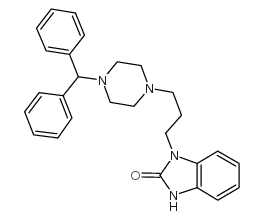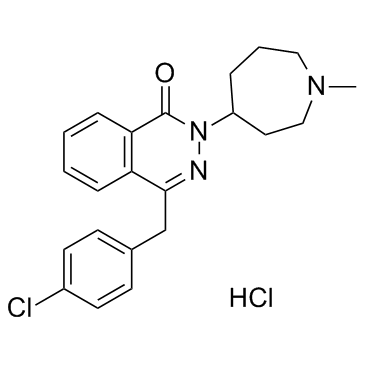Effect of histamine H1 receptor antagonists on TARC/CCL17 and MDC/CCL22 production from CD14+ cells induced by antigenic stimulation in vitro.
Naruo Shoji, Kazuhito Asano, Atsuko Furuta, Kojiro Hirano, Harumi Suzaki
文献索引:Int. Arch. Allergy Immunol. 155(1) , 38-51, (2011)
全文:HTML全文
摘要
Thymus- and activation-regulated chemokine (TARC) and macrophage-derived chemokine (MDC) are accepted to be important molecules in the development and maintenance of allergic diseases. Although several types of histamine H(1) receptor antagonist (antihistamine) have been developed and used for the treatment of allergic diseases, the influence of antihistamines on TARC and MDC production is not well understood.The present study was undertaken to examine the influence of antihistamines on TARC and MDC production from CD14+ cells after antigenic stimulation in vitro.CD14+ cells prepared from patients with pollinosis to Japanese cedar pollen were stimulated with specific allergen extracted from Japanese cedar pollen (Cry j 1) in the presence of azelastine (AZE), ketotifen (KET), fexofenadine (FEX) and oxatomide (OXA) for 6 days. TARC and MDC levels in culture supernatants were examined by ELISA. We also examined the influence of FEX on TARC and MDC mRNA expression, phosphorylation of mitogen-activated protein kinases (MAPKs) and transcription factor activation in CD14+ cells after Cry j 1 stimulation.FEX at 250 ng/ml, which is almost equal to therapeutic blood levels, caused a significant inhibition of TARC and MDC production.However, AZE, OXA and KET required higher concentrations than their therapeutic blood levels to suppress production of these factors. FEX at 250 ng/ml also suppressed NF-κB activation, phosphorylation of p38 MAPK and extracellular signal-regulated kinases 1 and 2 and expression of mRNA for TARC and MDC.These results suggest that antihistamines, especially FEX, suppress CC chemokine production from CD14+ cells through interference with antigen-mediated signaling and result in favorable modification of allergic disease states or conditions.Copyright © 2010 S. Karger AG, Basel.
相关化合物
| 结构式 | 名称/CAS号 | 分子式 | 全部文献 |
|---|---|---|---|
 |
奥沙米特
CAS:60607-34-3 |
C27H30N4O | |
 |
盐酸氮卓斯汀
CAS:79307-93-0 |
C22H25Cl2N3O |
|
Treatment of allergic rhinitis in infants and children: effi...
2009-01-01 [Drugs 69(18) , 2541-76, (2009)] |
|
Differential thermodynamic driving force of first- and secon...
2014-09-15 [Biochem. Pharmacol. 91(2) , 231-41, (2014)] |
|
Molecular complexes of ketaconazole and oxatomide with p-chl...
2011-09-01 [Spectrochim. Acta. A. Mol. Biomol. Spectrosc. 79(5) , 1137-44, (2011)] |
|
High-performance liquid chromatographic determination of oxa...
2002-01-01 [Arzneimittelforschung 52(10) , 754-63, (2002)] |
|
Effect of oxatomide, an antiallergic agent, on QT interval i...
2001-01-01 [Arzneimittelforschung 51(12) , 971-6, (2001)] |